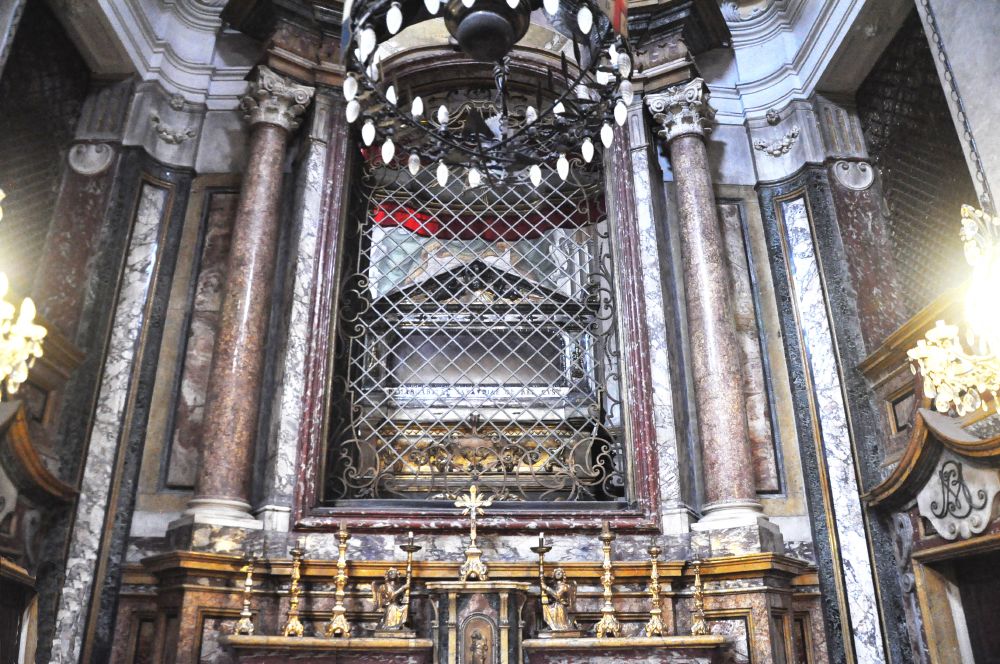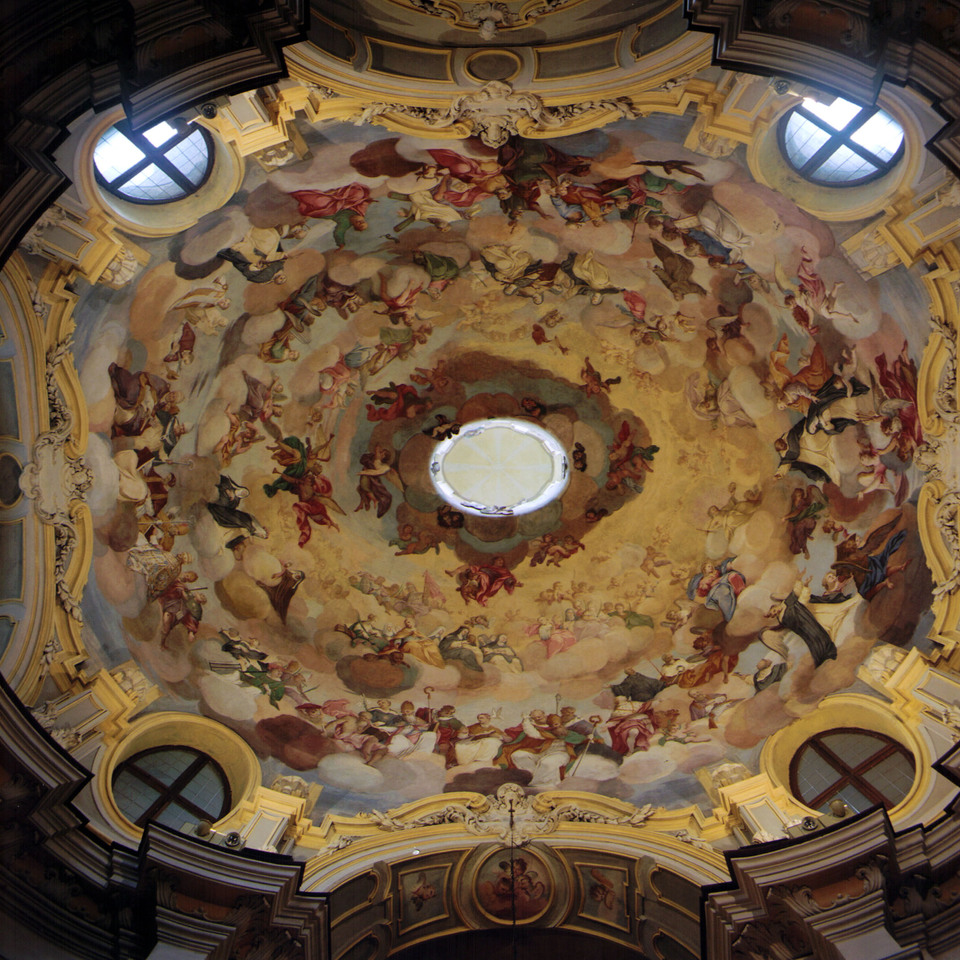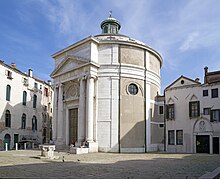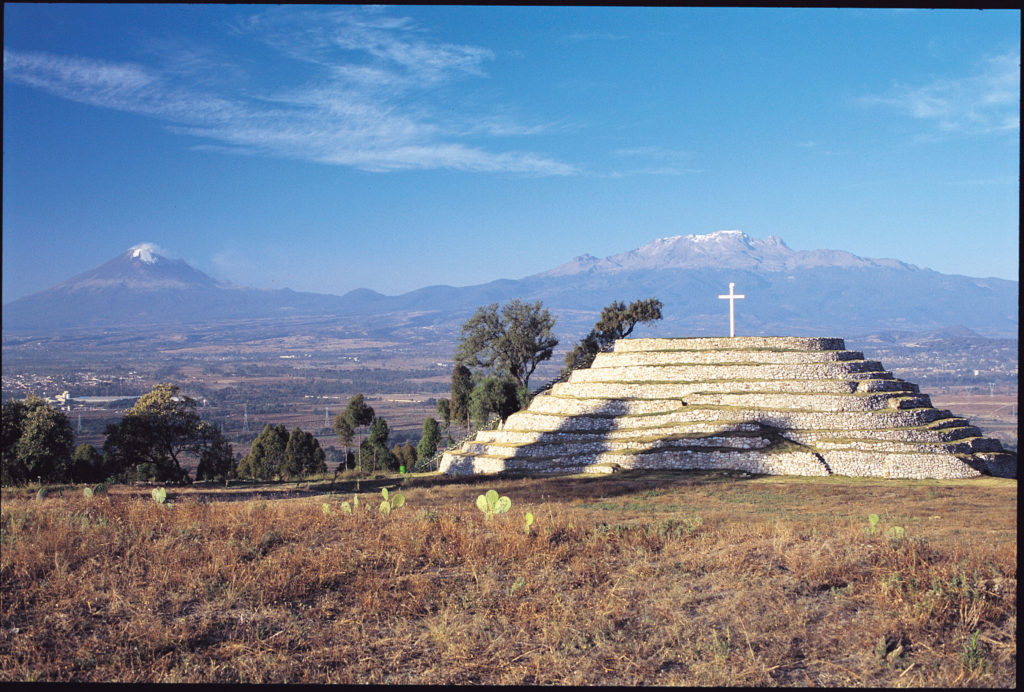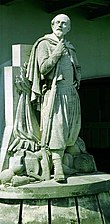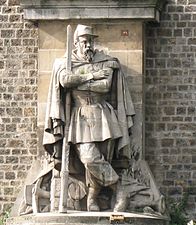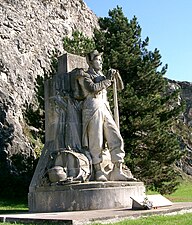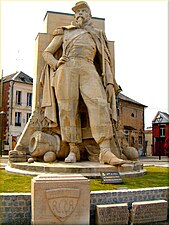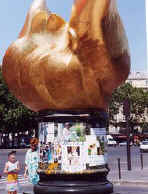|
|
General: GIUSEPPE GARIBALDI, A LEADER OF ITALIAN UNIFICATION, WAS AN ACTIVE MASON
Elegir otro panel de mensajes |
|
|
La Maddalena and Masonic Symbolism
La Maddalena and Masonic Symbolism. This small church in Cannaregio, is notable for its unusual round form and masonic symbolism.
Designed by Tommaso Temanza, with a circular plan inspired by the Pantheon in Rome; the current small church of Santa Maria Maddalena, was begun in 1763 and completed in 1780.
It is rarely open for visits, except during occasional exhibitions, including the Venice Biennale. To some, it appears to amplify the mysteries of this church.
It is located in a small campo, that opens out on to the main pedestrian “Strada Nuova” through-route; linking Rialto with the Railway Station.
Location
History
Links to Freemasonry
Brief development of Freemasonry in Venice
Links (internal-external)

Santa Maria Maddalena in the district of Cannaregio, usually referred to simply as “La Maddalena”.
LOCATION
Santa Maria Maddalena in the district of Cannaregio, usually referred to simply as “La Maddalena”. It is located in the small Campo di Maddalena, which opens onto the main “Strada Nuova” through route; linking Rialto with the Railway Station.
This section of the Strada Nuova, is called the “Rio Terra Maddalena” and was originally a filled-up canal (or Rio Terra).
The closest waterbus stop is “San Marcuola” on the Grand Canal, just a few minutes walk to the south-west.
La Maddalena and Masonic Symbolism – History
The first church here was built in 1220, by the patrician Balbo family; probably on the site of a fortified house-castle. There is some evidence of the family’s association with the Knights Templar. Traces of the path left by the Templars’, are still visible today. In fact, they were still in existence in Venice, until the order was disbanded in 1312. Legend has it, that their fabled treasure was hidden for some time, on the Venetian island of St. Giorgio in Alga.

Above: Note the Bell-Tower, that was demolished in 1888, features in an old print.
After the end of the four wars, that led Venice against Genoa and ended in 1356; the Senate decided each year to hold public celebrations, in honour of St Mary Magdalene.
It was decided to enlarge the church, including a watchtower; which was turned into a bell tower. The bell tower was demolished in 1888.
The church was restored in the early 18th century, but by 1780, it was entirely rebuilt in a neoclassical design by Tommaso Temanza, with a circular plan inspired by the Pantheon and Santo Stefano Rotondo, in Rome. Temanza, was better known as a theorist and historian and this is one of his few completed buildings.
This makes it the last religious building undertaken, under an independent Venetian Republic. The only other round churches in Venice are La Salute and San Simeon Piccolo.
During French rule, the church lost its status in 1810 as a parish church, in 1820 it was closed; to again serve as an oratory. The bell tower was demolished in 1888. Today, the church belongs to the municipality of San Marcuola.
The present interior has a compact form that is dodecagonal. with four side chapels and a presbytery. Twelve ionic pillars that symbolise the apostles, support the dome. Four Ionic half-columns support the tympanum and attic.
In the lunette of the portal, is an allegorical representation of the Solomon Islands and divine wisdom. Right next to the entrance in the interior, is a painting by Giandomenico Tiepolo, of “The Last Supper”.
Outside the apse, is a 15th-century bas relief of the Madonna with Child.
La Maddalena and Masonic Symbolism – Links to Freemasonry
The most notable feature is the flat portal, with probable masonic symbolism of “the eye within the triangle” over the doorway.
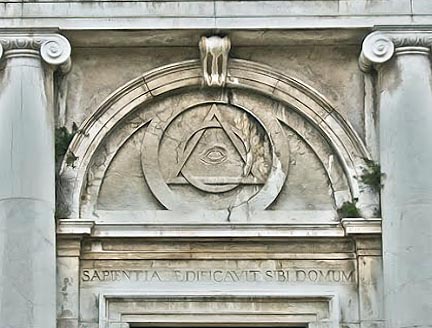
Obviously round churches have existed since antiquity and the “eye within the triangle”, has long been a Christian symbol. However, there is further strong associations with Freemasonry here.
Thomas Temanza, frequented the circle of Andrea Memmo, a procurator of San Marco, who, together with his brothers Bernardo and Lorenzo; were amongst the first most well-known Freemasons in Venice. They were initiated by non-other than Casanova!
Also, on the pediment is the inscription “Sapienta aedificavit sibi domun”, which might be translated to read ”Wisdom built this House Herself” – a motto that appears to deny the role of God.
Further evidence of Freemasonry can be seen inside.
Temanza’s church originally, had only a single altar, “for a single Supreme Being”; as the Masonic creed urged. Contrary to custom in other Venetian churches, there were no altars to the Virgin, Mary Magdalene, or any other saint. Two additional altars were later added, to erase this Masonic influence.
Another piece of evidence, is that inside is the tombstone of Tomasso Temanza, bearing the date of his death (1789), a compass, ruler and set-square. Admittedly, the tools of his architectural profession; they are also well-known Masonic symbols.
Brief development of Freemasonry in Venice
It was the “Age of the Enlightenment” and the rationalism associated with the Masons, was in vogue. In the 18th century, Venice had an influential fraternity of freemasons.
In 1746, a lodge was founded in Venice, which became associated with Giacomo Casanova, Carlo Goldoni, and Francesco Griselini. It survived until 1755, when the intervention of the “Inquisition”; led to the arrest of Casanova and the dissolution of the lodge.
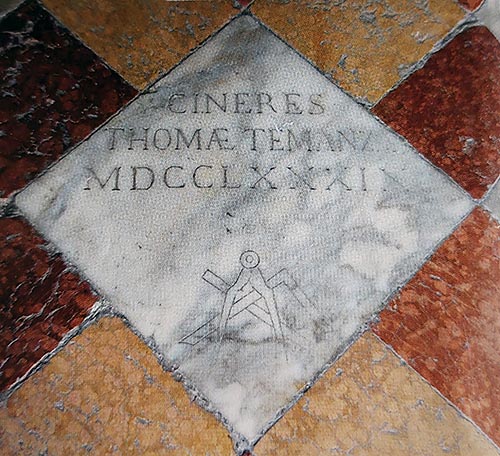
Above: The tombstone of Tomasso Temanza, bearing the date of his death (1789), a compass, ruler and set-square.
New lodges were founded in 1772, with warrants from the Premier Grand Lodge of England, in Venice and Verona, on the initiative of the Secretary of the Senate, Peter Gratarol; which remained active until 1777.
The Rite of Strict Observance established a chapter in Padua in 1781, which opened another in Vicenza shortly afterwards.
All Freemasonry was suppressed in 1785.
The start of the unification process in 1859, saw a revival in Freemasonry. Giuseppe Garibaldi, a leader of Italian unification, was an active mason and a keen supporter of the craft. In the 1920’s, Freemasonry was again suppressed under Fascism; but revived again after the fall of Benito Mussolini.
Links (internal–external)
Please see my other related posts, in the category of: History and Architecture
For those interested in the mysterious, mythical or dark side of Venetian history and culture; I have put together a list of links below to those posts that include elements of Christian Symbolism, Sacred Geometry, Kabbalah, Freemasonry and Alchemy, which I hope to expand.
Eye of the Triangle
Sacred Geometry
St Mark’s Basilica
The Lion of St Mark
Santa Maria della Salute
Symbolism of the Venetian Cross
Palazzo Lezze and Alchemic Symbolism
Kabbalah and San Francesco della Vigna
https://imagesofvenice.com/la-maddalena-and-masonic-symbolism/ |
|
|
 Primer
Primer
 Anterior
2 a 8 de 8
Siguiente
Anterior
2 a 8 de 8
Siguiente
 Último
Último

|
|
|
l sacro edificio sorge all’incrocio tra via Vittorio Emanuele (via “Maestra”) e via Paruzza, nel sito dov’era in origine la chiesa dell’ordine monastico degli Umiliati, anch’essa intitolata a S. Maria Maddalena (o Maria di Màgdala, discepola di Gesù Cristo, forse prima evangelizzatrice della Provenza francese e poi dedita all’eremitaggio).
Nel Medioevo l’isolato urbano (in seguito completamente occupato dal monastero delle domenicane) comprendeva la casa conventuale degli Umiliati («domus Umiliatorum Albe»), la commenda di S. Antonio abate (chiesa e ospedale documentati dal 1343) dell’ordine degli Antoniani.
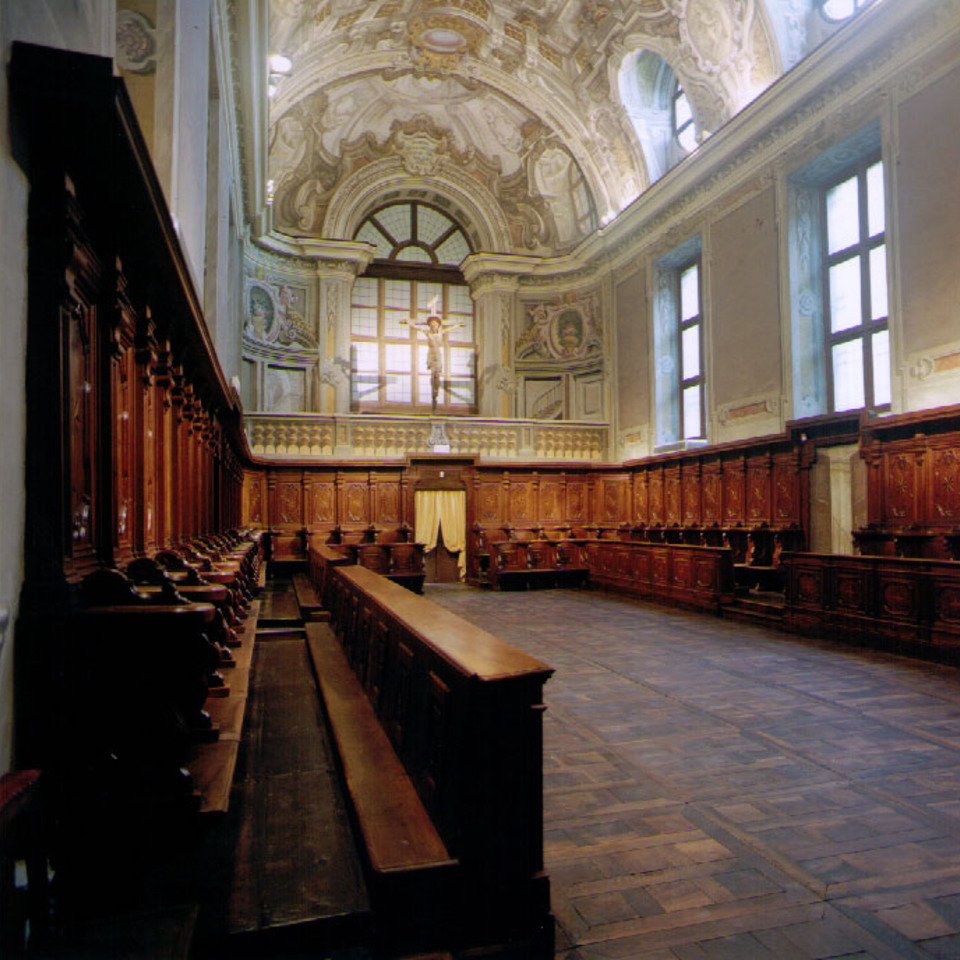 2 2
1.Urna Santa Beata Margherita di Savoia
Realizzata nel 1840 dall’orefice torinese Pietro Borrani su disegno dell’ingegnere Alfonso Dupuy.
2.Coro
Ospita quarantotto ricercati stalli in legno di noce, con braccioli decorati a volume.
La
Storia
Chiesa di Santa Maria Maddalena
Secondo un dato notificato dallo storico albese Giuseppe Vernazza (1745-1822), nel 1251 viene posta la «Pietra primaria per edificar la chiesa di S. M. Maddalena ad uso degli Umiliati in Alba intra fossatum burgeti».
Il primo priore, documentato nel 1253, è frate Rufino Cagnazerre. Ulteriori attestazioni documentarie di quell’ordine in città sono del 1365, 1465 e del 1573. Ancora in riferimento alla chiesa medievale («Nel borgo di Alba, nelle case della casa e chiesa di santa Maria Maddalena dell’Ordine dei Frati Umiliati del borgo di Alba») è la sentenza del 1365 per l’annuale pagamento della decima pronunciata dal frate Iacopo Mascaro «preposito della casa (Domus Dei) dei frati Umiliati di Asti». Risultano in quel documento gli Umiliati in città: frate Domenico Bogeno di Ceva preposito, i frati Bompetro Penacio e Pietro de monte di Gaurena.
IL NUOVO MONASTERO
Già nel 1446, dopo l’autorizzazione pontificia con Bolla del 1445 di papa Eugenio IV, viene benedetta dal vescovo di Alba mons. Alerino Rembaudi la pietra fondamentale del nuovo monastero di S. Maria Maddalena, affidato alle monache domenicane, su iniziativa di Margherita di Savoia (1390-1464), dal 1418 vedova del marchese Teodoro II del Monferrato e poi divenuta monaca terziaria domenicana dopo aver rifiutato la mano del duca Filippo Maria Visconti di Milano.
La cerimonia d’inizio lavori avviene nel cortile del palazzo marchionale, prossimo alla chiesa preesistente, che nel 1422 era stato concesso alla nobile dal figliastro Giangiacomo diventato effettivo marchese monferrino. Il sito viene prescelto poiché è all’interno del palazzo che è stato messo in diretta comunicazione con l’antico chiostro degli Umiliati. Margherita di Savoia-Acaia decede nel 1464, in spirito di santità. Dapprima il papa Pio V nel 1566 ne permette il culto alle monache del monastero albese.
IL SEICENTO
Il pontefice Clemente IX lo conferma nel 1669 e il successore Clemente X lo estende a tutto l’ordine domenicano nel 1671, fissando la festa annuale della beata Margherita il 27 novembre. Nel 1689-90 viene realizzato l’altare maggiore. Notevoli festeggiamenti in città avvengono nel 1693 per la reposizione delle spoglie mortali della venerabile, dopo una ricognizione episcopale nell’anno precedente, in una urna reliquiaria, donata dal duca Vittorio Amedeo II di Savoia. Il corpo della beata rimane esposto alla devozione nella chiesa conventuale fino al 2002, essendo trasferita nel nuovo monastero di clausura in strada Serre (a lei intitolato) per la conclusione della ricognizione canonica della salma, che lì è rimasta.
LA CHIESA DI SAN ANTONIO ABATE
La chiesa di S. Antonio abate, prima degli Antoniani, poi passata ai frati Umiliati sino al Cinquecento e successivamente assegnata alla Confraternita dei Pellegrini fino al 1656, risultava inclusa a lato del complesso conventuale. Venne ancora mantenuta con lavori nel 1638-1639, a cura dei confratelli. Un inventario delle suppellettili nella sacrestia di quel sacro edificio fu stilato nel 1646. Non è più esistente.
IL CHIOSTRO
Il chiostro del monastero viene ristrutturato verso il 1685-1690. L’impresa della ricostruzione del complesso monastico di S. Maria Maddalena inizia nel 1731, con i primi disegni di Bernardo Vittone revisionati dal conte architetto Carlo Giacinto Roero. I lavori, attuati dal 1733-1734 per il fabbricato del coro, terminano nel 1749 per la chiesa progettata dal Vittone. La sede cultuale viene consacrata dal vescovo di Alba mons. Natta dopo il 1750. Verso il 1785 sono effettuati lavori nel complesso conventuale, diretti dall’architetto Morari. Nel sacro edificio della Maddalena, nel 1789, l’architetto e conte Carlo Emanuele Rangone riceve dall’abate Girardi l’abito e la croce del cavalleresco ordine sabaudo di S. Maurizio. Il palazzo albese dei nobili Rangone era ubicato nella via Vittorio Emanuele (la via “Maestra”). Una loro tenuta era a Diano d’Alba e diverse proprietà a Montelupo Albese, di cui avevano pure il titolo nobiliare.
IL REGISTRO FRANCESE
Nel 1799 viene redatto dal governo francese un elenco di tutti i conventi piemontesi. Per il monastero della Maddalena di Alba è registrata la seguente situazione: «Monache Domenicane di Santa Maria Maddalena, 23 monache e 18 converse, 20.000 lire [reddito]». Ma, con successivi provvedimenti del governo imperiale, la sorte del convento cambia drasticamente: a seguito della soppressione napoleonica degli ordini monastici, nel 1802 le monache abbandonano il complesso conventuale. A quel tempo vi risultano presenti la badessa Angiola Teresa Inverardi, 24 professe e otto converse, in una situazione parzialmente diversa rispetto al 1799.
DOPO LA CHIUSURA DEL CONVENTO
Durante il periodo di chiusura, i fabbricati del complesso conventuale vengono affittati a privati, tranne la chiesa e il coro che sono affidati ai canonici Giuseppe Pollano e Carlo Pagliuzzi, poi da loro in parte riscattati anche con la cooperazione del conte Giovanni Battista Veglio di Castelletto, sindaco di Alba.
L'OTTOCENTO
A seguito della Restaurazione sabaud, solo dopo complicate vicende burocratiche, nel 1817 un settore del convento viene restituito alle monache dal re Vittorio Emanuele I di Savoia. Nel 1824 l’intero complesso conventuale ritorna alle suore domenicane, su disposizione del sovrano Carlo Felice di Savoia. Nell’anno successivo l’urna con la salma della beata viene solennemente riportata nella chiesa, alla presenza del re e della consorte Maria Cristina di Borbone. Però nel 1882, nonostante talune opposizioni, la Municipalità di Alba requisisce definitivamente il complesso conventuale, applicando le norme della legge Siccardi; cosicché le monache di nuovo lo abbandonano definitivamente. Nel 1889, su progetto dell’ing. municipale Molineris, la manica del convento prospiciente via Vittorio Emanuele viene riedificata per insediarvi le scuole pubbliche.
https://langhe.net/sight/chiesa-santa-maria-maddalena/ |
|
|
|
|
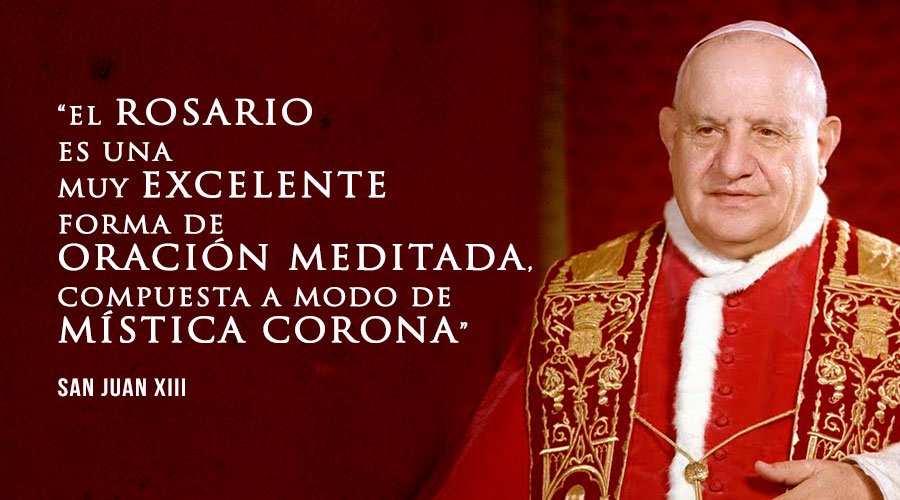  
  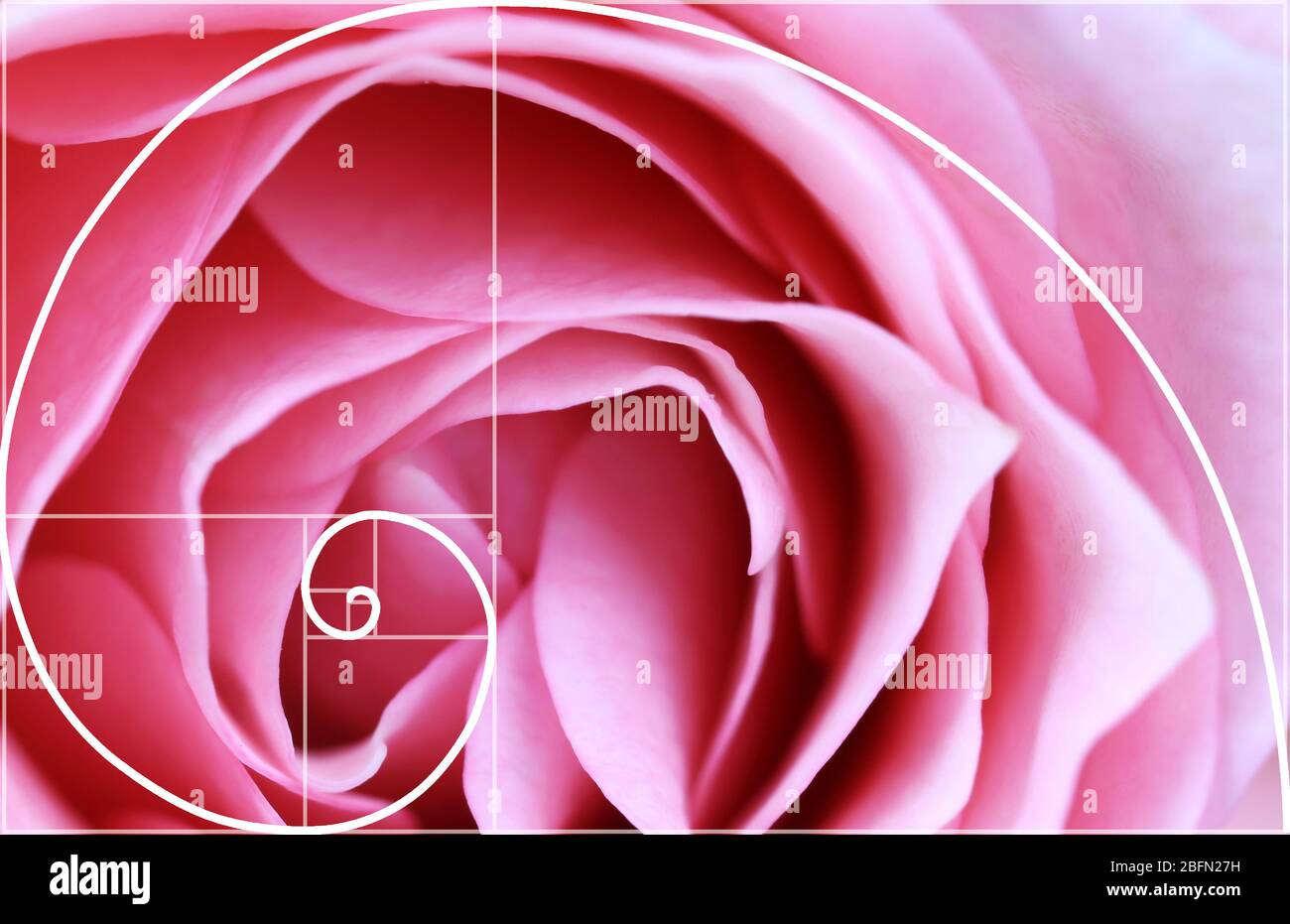  
Subestación eléctrica de maniobras Magdalena I (Parque Solar Magdalena I)
NOVIEMBRE 17, 2021 PV MAGAZINE
Pirámide de la Espiral Xochitecatl, Tlaxcala
Fotografía: Gobierno del estado de Tlaxcala
La Dirección General de Impacto y Riesgo Ambiental de la Secretaría de Medio Ambiente y Recursos Naturales informa que ha recibido la documentación de la firma promovente Más Energía, para el proyecto de la Subestación eléctrica de maniobras Magdalena I (Parque Solar Magdalena I).
El proyecto consiste en la construcción, operación y mantenimiento de una subestación eléctrica de maniobras, dos accesos, y una línea eléctrica de entronque de 400 Kv que se interconectará a una línea de transmisión eléctrica existente de 400 Kv propiedad de la Comisión Federal de Electricidad para desahogar la energía eléctrica que se genera en la planta fotovoltaica parque solar Magdalena I al Sistema Eléctrico Nacional.
Este contenido está protegido por derechos de autor y no se puede reutilizar. Si desea cooperar con nosotros y desea reutilizar parte de nuestro contenido, contacte: editors@pv-magazine.com.
 
6 Schematic representation of a cyclotron. The distance between the pole pieces of the magnet is shown larger than reality to allow seeing what is inside
https://www.researchgate.net/figure/Schematic-representation-of-a-cyclotron-The-distance-between-the-pole-pieces-of-the_fig3_237993541
|
|
|
|
|
El puente del Alma (en francés: Pont de l'Alma) está localizado en París, atraviesa el río Sena. Su nombre recuerda la batalla del río Almá el 20 de septiembre de 1854 que tuvo lugar durante la Guerra de Crimea.
En 1999, quedó incluido dentro de la delimitación del ámbito de Riberas del Sena en París, bien declarado patrimonio de la Humanidad por la Unesco.1
 Zuavo
Sobre la única pilastra que descansa en el agua, se encuentra la estatua de un zuavo realizada en 1856, que sirve de instrumento popular de medida de las crecidas del Sena. Cuando el nivel del Sena llega a los pies de este zuavo, las vías de las orillas en general se cortan. Cuando el agua sube hasta los muslos del zuavo, el Sena deja de ser navegable. Durante la crecida de 1910, el agua llegó hasta los hombros.
El zuavo se sitúa hoy a mayor altura que en su ubicación original, debido a un elevación en 1970. Por lo que en la actualidad la misma indicación anterior a 1970 significa una mayor crecida. La administración mide las crecidas del Sena en el puente de la Tournelle.
 Le Pont de l'Alma Le Pont de l'Alma en 1900, con su pasarela peatonal.
El puente fue construido entre 1854 y 1856 bajo la dirección de Charles-Marie Gariel. Para la Exposición Universal de 1900, estuvo doblada de una pasarela peatonal, llamada pasarela del Almá. Se inauguró por Napoleón III el 2 de abril de 1856 (en principio su inauguración estaba prevista para la Exposición Universal de 1855 las pilastras estaban decoradas por 4 estatuas —un zuavo y un granadero, esculpidos por Georges Diebolt, y un cazador a pie y un artillero, esculpidos per Auguste Arnaud— representando los cuatro regimientos que combatieron en la Guerra de Crimea. El Cazador a pie es visible desde la autopista A4 contra el muro sur de la redoute de Gravelle en el bosque de Vincennes, el Granadero está en Dijon y el Artillero ha sido llevado a La Fère en Aisne.
De 1970 a 1974, el puente ha sido completamente reconstruido, como consecuencia de su estrechez y, sobre todo, de su hundimiento. Sólo el Zuavo se conserva en el mismo sitio.
El puente enlaza los distritos 7.º, 8.º y 16.º de París, y está situado entre la avenida de New York y el muelle Branly.
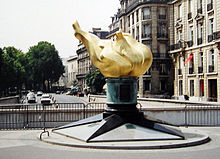 Llama en el Puente del Almá, la entrada al túnel se encuentra detrás, el puente (no visible) justo a la izquierda.  Estación de hidrógeno de Air Liquide en el Pont de l'Alma
El puente del Almá se encuentra cerca del túnel donde Diana, princesa de Gales, falleció en agosto de 1997.2 Este túnel, a menudo llamado túnel del puente del Almá, se encuentra de hecho entre el puente y la Place de l'Alma. Sobre esté túnel, se levanta la Llama de la Libertad, réplica a tamaño real de la llama de la Estatua de la Libertad. Este monumento, ofrecido por el periódico International Herald Tribune en 1987, conmemora la amistad franco-estadounidense y agradece a Francia la restauración de la estatua de la Libertad. Este monumento se ha convertido en un lugar de homenaje a Lady Di por parte de sus admiradores y esta parte de la plaza se llama desde 2019 "Place Diana" (Plaza Diana).3
- ↑ Puede consultarse el ámbito de la delimitación del bien «Paris, rives de la Seine», en formato pdf, en el sitio oficial de la Unesco, disponible en línea en: [1]. Consultado el 14 de agosto de 2018.
|
|
|
|
|
Bigfoot's message was so urgent Earth had to shake violently on April 6, 2009 in Bigfoot/boot Land, Italy...
 

April 6 Italy hunts for quake survivors
..from December 14-16, 2008 with love. (See 'Whisper of the Fifth Sun' for more on this predicted quake.)
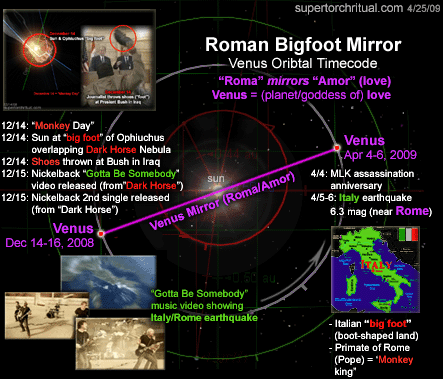
Bigfoot, giant foot, giants... Genesis 6, the Nephilim, heaven-earth interbreeding, i.e. human genetic manipulation ('guided evolution'):
Book of Genesis chapter 6: And it came to pass, when men began to multiply on the face of the earth, and daughters were born unto them, That the sons of God saw the daughters of men that they were fair; and they took them wives of all which they chose. [...] There were giants [Nephilim] in the earth in those days; and also after that, when the sons of God came in unto the daughters of men, and they bare children to them, the same became mighty men which were of old, men of renown. And God saw that the wickedness of man was great in the earth, and that every imagination of the thoughts of his heart was only evil continually. And it repented the LORD that he had made man on the earth, and it grieved him at his heart. And the LORD said, I will destroy man whom I have created from the face of the earth; both man, and beast, and the creeping thing, and the fowls of the air; for it repenteth me that I have made them. But Noah found grace in the eyes of the LORD. A monstrous Sin deemed irreversible, Earth had to be cleansed by a Great Flood.
Sin is the name of a Sumerian (and Minaean) god of the Moon...
Still standing after the Flood as 'Noah'.
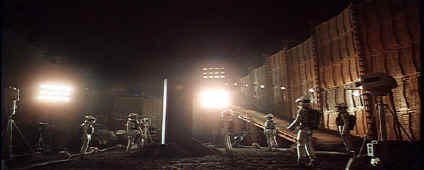
A forbidden 'lunar strain' of mankind...
A 'Diana bloodline'.
* * *
Diana = Bigfoot = Nephilim = Noah

Argentina is both a moon...
...and a Bigfoot:

...making headlines the day before Michael Jackson's death:

Jun 24 Gov. Sanford admits to extramarital affair
with Argentine woman
For all intents and purposes a missing person from June 18 until 24 (i.e. around Prince William's birthday), Governor Sanford spent five days 'crying in Argentina' with 'Maria'...
Maria = Mary = Madonna

Madonna singing 'Don't Cry For Me Argentina'
...in 'Evita' (1996), playing Maria Eva Duarte de Peron, First Lady of Argentina from 1946 to 1952, a Diana-like beloved female figure who died young at the age of 33 (Diana was 36 when she died).
Maria/Mary = Marianne
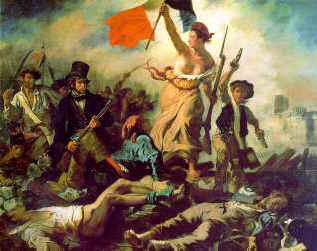 
She is essentially Lady Liberty standing gracefully with her torch in New York and Paris very near where Princess Diana was killed marked by a torch.
She is interchangeable with Columbia - the feminine personification of the United States. It was in the South Carolina state capital Columbia that Gov. Sanford revealed his Argentine affair... echoed by a train collision in the District of Columbia (Washington DC) on June 22:

June 22 DC Metro subway trains collide - 9 dead, 80 injured
Timeline:
June 18-24: Gov. Sanford missing/crying in Argentina
June 21: 'Impact' Part 1 on ABC; Prince William birthday
June 22: DC Metro Red Line trains in collision
June 23: US Moon probes (LRO/LCROSS) reach Moon
June 24: Gov. Sanford reveals Argentine affair
June 25: Death of Michael Jackson & Farahh Fawcett
'Metro' means 'meter' in Spanish, Italian, Portuguese, etc. The meter is historically defined as 1/10,000,000 of the distance between the North Pole and the equator through Paris, or in other words the Paris Meridian between the North Pole and the equator. The Paris Meridian is also the 'Rose Line' (an esoteric concept popularized by The Da Vinci Code) i.e. a 'Red Line'...

DC Metro Red Line = French/Columbian Rose Line
...traditionally implying the Blood Royal/Sangraal or the Marian/Columbian Bloodline of the Holy Grail.
In Bloodline of the Holy Grail Laurence Gardner writes of the House of Stuart, the royal bloodline to which Princess Diana and her children belong (pp. 344-5):
The senior Stewart descent goes all the way back to King Arthur's father, King Aedan of Scots, on the one hand and to Prince Nascien of the Septimanian Midi on the other. The Scots descent traces further back through King Lucius of Siluria to Bran the Blessed and Joseph of Arimathea (St James the Just), while the Midi succession stems from the Merovingians' male ancestral line through the Fisher Kings to Jesus and Mary Magdalene. Conjoining the lines from their 1st-century points of departure, the descent is in the succession of the Royal House of Judah. This is a truly unique line of sovereign lineage from King David in one of the key descents which comprise the Bloodline of the Holy Grail.
Nephilim/Bigfoot bloodline = Moon/Diana bloodline = Rose Line = Bloodline of the Holy Grail = Stuart Bloodline (?) = Princess Diana bloodline...
Was Princess Diana a product of a particularly special strain of the Grail bloodline and the Stuart bloodline? Perhaps (argued for instance in Princess Diana: The Hidden Evidence). But that's speculative and should be treated as a storyline rather than fact. It may well be that the name 'Diana' was all it took to make her 'special' in the esoteric context of Grail symbolism.
https://www.goroadachi.com/etemenanki/moonwalker.htm |
|
|
 Primer
Primer
 Anterior
2 a 8 de 8
Siguiente
Anterior
2 a 8 de 8
Siguiente
 Último
Último

|
|
| |
|
|
©2025 - Gabitos - Todos los derechos reservados | |
|
|





